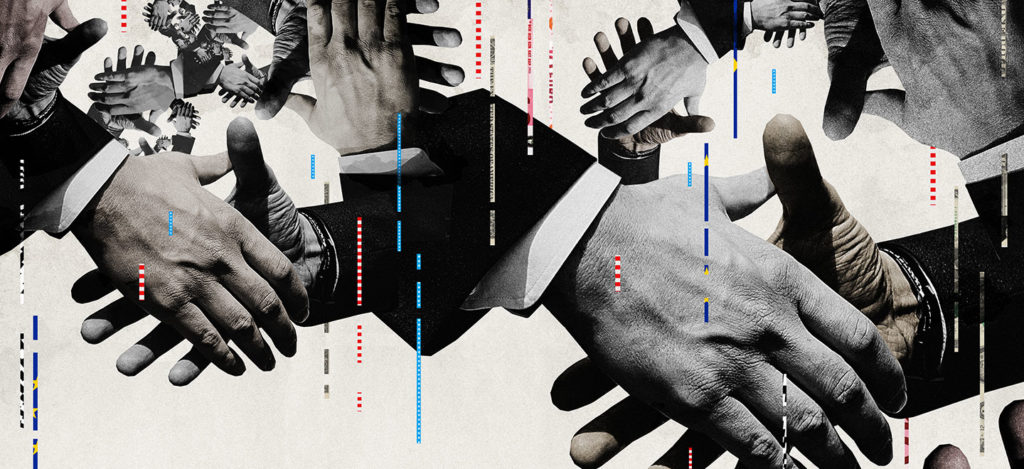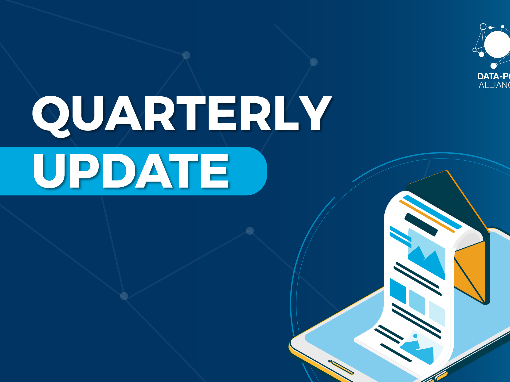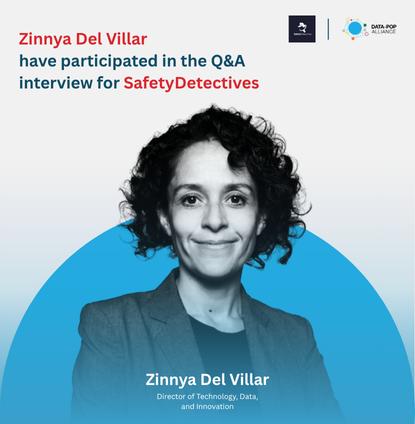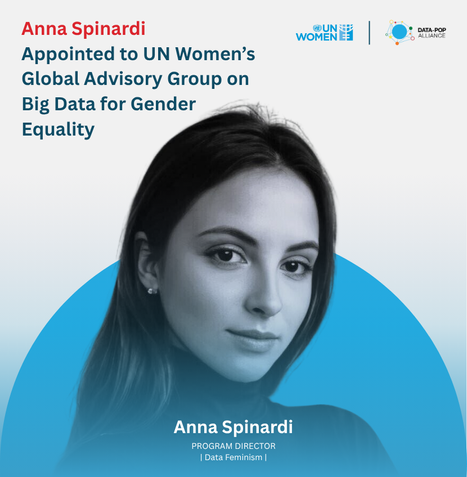LINKS WE LIKE #28
Corruption is a major challenge for governments, companies, and societies all around the world. It is an expensive criminal and cultural practice. According to the UN, an estimated one trillion dollars are paid in bribes annually, while another 2.6 trillion are lost in corrupt activities globally. However, the cost of corruption is not merely economic; it damages democracy, the rule of law, and institutions. Corruption erodes public trust, impedes investment, has environmental consequences, and even puts people’s lives at risk. As if that was not enough, this issue has a disproportionate impact on the poor and most vulnerable, who pay the highest percentage of their income in bribes, increasing costs and reducing access to services, including health, education and justice, which further exacerbates inequality, poverty, and social division.
According to Transparency International corruption can take many forms such as conflict of interest, beneficial ownership secrecy, nepotism, extortion, etc. It can happen anywhere, in business, governments, courts, in the media and in civil society, and can involve anyone across different industry sectors (health, sports, education, infrastructure, etc.). Corruption is by nature surrounded by secrecy. For better or worse, usually, exceptional situations such as natural disasters, accidents and even a pandemic are the triggers that expose the cracks in the systems as well as the mechanisms that have enabled corrupt practices.
The implementation of artificial intelligence and automation technologies as well as Big Data analysis are increasingly being used and explored by governments, private sector and civil society in an effort to reduce and eliminate this practice. Open data has become an important tool against corruption and fraud, and the establishment of international standards and partnerships have boosted the use of technology to support the fight against corruption. AI and machine learning tools now more than ever offer an opportunity to find insights and anomalies within big and open datasets, helping authorities and citizens to reveal complex patterns and inconsistencies; process large amounts of data, and apply algorithms that cannot be threatened nor bribed.
Technological solutions, let’s not forget, are just one of the means to combat the problem. It is urgent to continue developing institutional processes based on integrity, accountability, and whistleblowers protection. Investigation and prosecution systems need to be strengthened, especially in countries with high levels of corruption, so that cases are documented, and those responsible pay for their crimes no matter their social or political status.
In this edition of Links We Like explore the topic of data and anti-corruption by discussing examples of how technology can be a weapon against corruption, or make processes more efficient and transparent.

Corruption is probably one of the biggest issues plaguing Ukraine. In 2015, Yuriy Bugay launched an innovative procurement system to curb corruption in public contracting. ProZorro (meaning “transparent” in Ukrainian) is a hybrid electronic open source government e-procurement system, that helps anti-corruption bodies spot tenders designed to favour particular bidders. In the Open Contracting Stories podcast, Yuriy Bugay suggests that the e-procurement system’s benefits go beyond reducing corruption to minimizing bureaucracy, increasing competition, and making procurement fairer for all suppliers. E-procurement systems hold enormous potential for efficiency and effectiveness gains and minimize the risks of misuse or abuse. They bring about notable improvements in the transparency and accountability of public procurement administration, accessibility and citizen participation. Building on this project’s success, the Ukrainain parliament enacted a new law requiring all public procurement to be carried out via ProZorro. The system has generated huge savings for the Ukrainian public purse, and improved the quality of public service delivery. It is estimated that ProZorro is behind up to 10% of the overall public spending savings and has saved the Ukrainian government almost $1 billion via increased competition in bidding.
The ProZorro project launched by the Ukranian government (see previous link) is an example of a bottom-up approach in using AI-Anti corruption tools (Hereafter AI-ACT), where the approach allowed for active civil society and journalists to play the watchdog role over the government. They were able to effectively flag corruption in public contracting, and communicate them to the public. On the other hand, in the Philippines a top-down approach came about with the Kalsada Program to evaluate the quality of road building materials, and consequently (and inadvertently) to identify potential cases of embezzlement. In a World Bank blog post, Kaiser, Rahemtulla and Van den Brink explain how citizens were initially encouraged to use their GoPro cameras to make videos that would later be converted into digital maps. The incentive was potentially getting paid by the Department of Budget and Management to help build a better digital road map of the Philippines, especially in remote areas where roads were missing from maps. However, this quickly turned into a tool that allows the government to inspect whether road construction plans were getting built at the right time and within budget. This shows the use of AI-ACT to identify corruptive behavior goes both ways and could be used either by the government or the public to make room for more transparency.
Additional Source: “Artificial Intelligence as an Anti-Corruption Tool (AI-ACT) Potentials and Pitfalls for Top-down and Bottom-up Approaches” by Kobis, Starke and Rahwan (“2020).
In this episode of the Kickback podcast, Irio Musskopf shares the story of Operação serenata do amor, a unique anti-corruption initiative he created using artificial intelligence. This initiative was born out of the concern over Brazil’s widespread corruption, which every year produces a waste of around $200 billion reales ($38 billion dollars). Shocked by this situation, Irio and his team created an algorithm named Rosie capable of using open data related to the Brazilian Congress’ reimbursement quotas and identifying legitimate or suspicious expenses. When any suspicious behavior was spotted by the algorithm, the team analyzed it and wrote to the representative from the Chamber of Deputies involved to request the return of the improperly used money to the public treasury. Since in many cases these requests were ignored, the research team used the Rosie Twitter bot account to automatically display the findings of the algorithms and tag the representative at fault. This mechanism not only enabled to increase public accountability but also to involve and engage citizens in the discussion. From the beginning, the source code was open and published on GitHub to allow for replication in other settings around the globe. Additionally, the team created a website called Jarbas that allows anybody to view and make sense of the data collected by Rosie on suspicious expenses.
Ethiopis Tafara, Vice-President and Chief Risk, Legal and Administrative Officer of the World Bank, recently referred to the Bank’s new approach for fighting corruption. Since the late 1990’s, the World Bank has acknowledged the fact that corruption is a development issue. This has been key for creating strong sanction mechanisms as well as good practices that help the Bank fulfil its mission of fighting poverty and enabling development. As Tafara explained, data analytics is becoming essential to fight fraud and corruption. Algorithms are now used by the World Bank to identify possible bid rigging schemes and to target high-risk projects, using limited resources effectively. In 2019, the Bank’s Integrity Vice Presidency (INT) received 2,460 complaints, opened 355 preliminary inquiries, and selected 49 of those for full investigations (INT’s 2019 Annual Report). The INT has thus gone from using data to track its work to better understanding and predicting problems as they come. Through their new online application, the INT is detecting bidding patterns and bringing information together on project, procurement, risk, complaints and investigations. These efforts have moved the World Bank toward a more transparent contract allocation process that assures donors that their resources are fulfilling the purpose for which they have been entrusted to this organization.
The General Assembly adopted on the second of June a sweeping Political Declaration to help countries tackle bribery, money laundering, abuse of power and other crimes. The declaration is entitled to show commitment to prevent and combat corruption and strengthen international cooperation. Members expressed their concern regarding threats posed by corruption that may lead to jeopardizing sustainable development and the rule of law. During the opening session, Minister of Foreing Affairs and Cooperation of Monaco, Laurent Anselmi proposed to use artificial intelligence as a tool to help States analyze their financial flow and fight against corruption. The assembly also encouraged the United Nations Office on Drugs and Crime to develop and share a comprehensive and scientifically correct statistical framework that is grounded on reliable data to help states guide their efforts against corruption. The following declaration with all its aspects whether related to the law, human rights, gender equality, or peacebuilding is a road map that uses data as a tool for countering future corruption in the future and on the 2030 Agenda for Sustainable Development.
Further Afield
Projects using AI to fight corruption
- Eric Kinaga on open data initiatives to fight land corruption in Kenya and beyond
- Prioritizing ethics and integrity: How Microsoft uses data analytics to fight corruption
- Data Dashboards for Anti-Bribery and Corruption Compliance
- Analytics for Integrity: Data-Driven Approaches for Enhancing Corruption and Fraud Risk Assessments
- GTI wins the IMF Anti-Corruption Challenge
- Turning Big Data in Africa into an Anti-Corruption Tool
- Big Data Analytics in Auditing to Identify Corruption Risks in Public Procurement
- Presentation by the OAS: Using Data and Transparency to Fight Corruption in Public Procurement
Open data and anti-corruption strategies
- Why data is Latin America’s best weapon against COVID-19 corruption
- The promise and perils of data for anti-corruption efforts in international development work
- Strategy: Linking open data to anti-corruption strategies
- turning Big Data Into a Useful Anti-corruption Tool in Africa
- Introduction to Role of Data Analytics in Anti-Corruption and Fraud
- Accountability and Anti-Corruption
- The next generation of anti-corruption tools
- Enabling big data in anti-corruption fight
- Can we use data analytics as an anti-corruption tool
- Big Data and Anticorruption: A Great Fit
- How data is changing the fight against corruption
- Research on Anti-corruption Theory under Big Data Environment
- Four ways to use data analytics to identify corruption red flags
- Is the data revolution a game changer in the fight against corruption
Technology and digitalisation against corruption


![M002 - Feature Blog Post [WEB]](https://datapopalliance.org/wp-content/uploads/2025/10/M002-Feature-Blog-Post-WEB.png)






